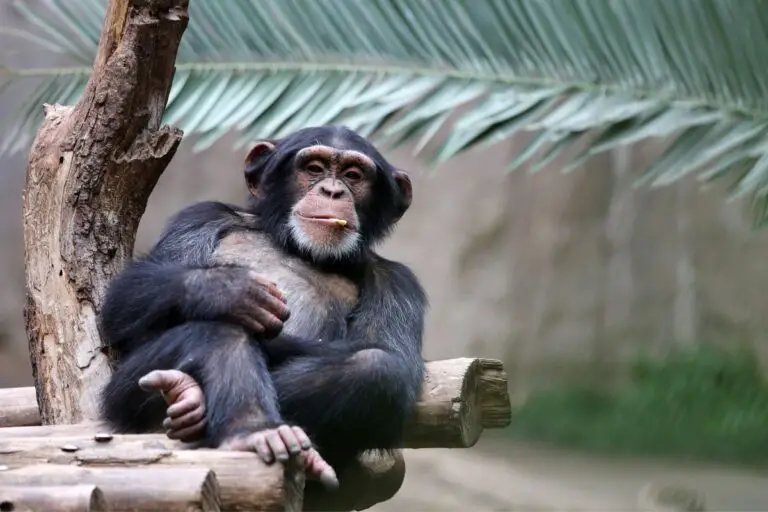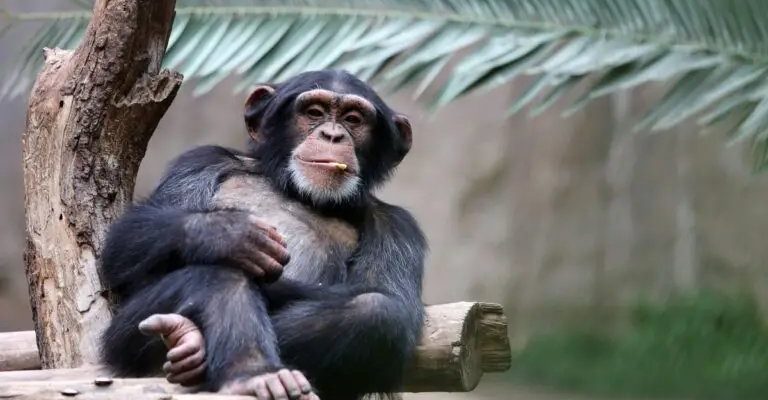
In this article, we’re diving into ten animals that are somewhat like chimpanzees. We’ll explore what makes them similar and how you can easily tell them apart. So, grab your coffee, and let’s get started on this wild journey through the animal kingdom!
1. Bonobos: The Peaceful Cousins
Bonobos are often considered the closest relatives to chimpanzees, sharing around 98% of their DNA. They’re often recognized for their matriarchal societies, where females typically hold more power. In contrast to the more aggressive nature seen in some chimpanzee groups, bonobos are known for their peaceful interactions and strong social bonds.
These primates tend to resolve conflicts through social bonding, and their preferred form of communication often involves physical affection. You might spot a bonobo giving a hug or a kiss to calm things down. In appearance, bonobos are slightly smaller, with darker faces and a more slender build compared to chimpanzees. If you’re ever in the wild and witness a group of primates interacting in this loving manner, you might just be looking at bonobos rather than chimpanzees.
2. Gorillas: The Gentle Giants
Gorillas are another close relative, and while they share many traits with chimpanzees, their size and demeanor set them apart. Unlike chimpanzees, gorillas are significantly larger and bulkier, often weighing up to 400 pounds. Don’t let their size fool you, though; these gentle giants are typically quite peaceful and spend much of their day munching on plants.
In social structure, gorillas are led by a dominant male, known as a silverback. While both gorillas and chimpanzees live in family groups, gorilla troops are generally more stable and less prone to the power struggles seen among chimpanzee males. If you find yourself marveling at the strength and calmness of a large, hairy creature, you’re likely looking at a gorilla rather than a chimpanzee.
3. Orangutans: The Tree Dwellers
Orangutans, with their long arms and distinctive red fur, are the tree-dwelling relatives of chimpanzees. While they share some cognitive similarities, they have adapted to a remarkably different lifestyle. Rather than living in groups like chimpanzees, orangutans are mostly solitary, spending much of their time in the treetops of tropical forests.
Their intelligence is evident in their problem-solving skills, but you might notice that orangutans are less social than chimpanzees. They use tools for various tasks, including obtaining food, just like their cousins. If you spot an animal hanging out in a tree, using a stick to grab some fruit, you could be watching an orangutan instead of a chimpanzee.
4. Gibbons: The Acrobats of the Jungle
Gibbons, sometimes referred to as “lesser apes,” are yet another fascinating relative. They’re known for their incredible agility and swinging abilities through the treetops. Unlike chimpanzees, gibbons are smaller and have longer arms in proportion to their bodies, making them exceptional climbers.
Gibbons usually live in monogamous pairs and are highly vocal, often known for their beautiful singing. While chimpanzees communicate using a variety of sounds and gestures, gibbons prefer to express themselves through song. If you hear a melodious tune echoing through the trees, it’s likely the gibbons engaging in their daily serenade, not a gathering of chimpanzees.
5. Macaques: The Clever Rascals
Macaques are a type of Old World monkey that shares some social behaviors with chimpanzees. They’re clever, adaptable, and known for their mischievous nature. Depending on the species, macaques can be found in various habitats from forests to urban areas, showcasing their ability to thrive in diverse environments.
While chimpanzees are generally more closely related to each other because they belong to the same family, macaques come from a different family altogether. You might notice that macaques have a more monkey-like appearance, with long tails and less robust bodies compared to the stockier build of chimpanzees. If you encounter a playful, tail-swinging creature causing a ruckus, you’re likely looking at a macaque and not a chimp.
6. Capuchin Monkeys: The Smartest Monkeys
Capuchin monkeys are small, intelligent primates known for their problem-solving skills and adaptability. Often seen in popular movies, these monkeys are recognized for their cleverness, similar to that of chimpanzees. Capuchins are social animals that thrive in family groups, much like their larger primate cousins.
However, they differ in size and appearance. Capuchins are significantly smaller and have distinctive markings with a lighter face and a darker body. If you see a tiny, agile monkey using tools or displaying impressive social behaviors, you might be looking at a capuchin rather than a chimpanzee.
7. Siamangs: The Singing Swingers
Siamangs are a species of gibbon known for their unique throat pouch, which allows them to produce loud calls that echo through the jungle. They share some similarities with chimpanzees in terms of intelligence and social behavior but differ starkly in physical characteristics and habitat.
Siamangs are typically larger than other gibbons, with a more robust body and a distinctive black coat. Their vocalizations are a fantastic way to communicate with others, especially to establish territory. If you hear a deep, booming song in the forest, it’s likely a siamang rather than a chimpanzee voicing its presence.
8. Tarsiers: Tiny Primates with Big Eyes
Tarsiers are small, nocturnal primates that look very different from chimpanzees, but they share the same order—primates. Known for their enormous eyes that help them see in low light, tarsiers are more similar in size to a squirrel than to a chimp.
These little creatures are excellent at jumping from branch to branch, showcasing their unique adaptations. While they are not closely related to chimpanzees, their presence in the primate family tree makes them intriguing. They can often be found in Southeast Asia’s tropical forests. If you see a small, wide-eyed primate leaping through the trees at night, you’re looking at a tarsier, not a chimp.
9. Mandrills: The Colorful Characters
Mandrills are often called the most colorful primates, thanks to their bright blue and red facial markings. They’re larger than chimpanzees and belong to the baboon family but share a few social behaviors that make them similar. Mandrills are known for their loud calls and complex social hierarchies, similar to chimpanzees.
While chimpanzees are mostly covered in hair, mandrills have hairless, vividly colored faces and rumps that make them stand out. If you spot a large, vividly colored creature engaging in social antics, it’s likely a mandrill, not a chimpanzee.
10. Humans: The Closest Relatives
Finally, let’s not forget humans! As the closest relatives to chimpanzees, we share about 98% of our DNA. This genetic similarity explains why human behaviors like communication and social bonding find common ground with chimpanzee characteristics.
Though we might walk upright and have a vastly different lifestyle, many of our emotional responses and social interactions mirror those of chimpanzees. We all come from the same family tree, even if we’ve branched off significantly! If you ever find yourself reflecting on the complexities of our own species, remember that those traits are deeply rooted in our shared ancestry with chimpanzees.
Understanding the similarities and differences between chimpanzees and their relatives offers us a unique window into the animal kingdom. From the peaceful bonobo to the clever capuchin, each of these creatures has its own special traits that make them fascinating to learn about. Remembering key features like size, social structures, and habitat preferences can help you easily tell them apart.
Whether you’re a casual observer or an animal enthusiast, knowing about these relationships enriches our appreciation for the natural world. Next time you think of chimpanzees, consider their many relatives and the diverse ways they navigate life. Keep exploring and learning—there’s always more to discover about our planet’s incredible beings!

